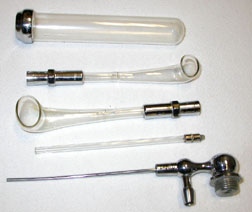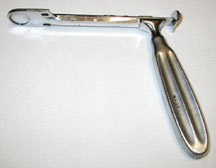Polio and Tonsillectomies
[back]
Polio
See:
DDT
Provocation polio
Polio and Tonsillectomies - Literature
Search
[Media10 Sept 2004]
Most tonsil operations
'needless'
Quotes
Tonsillectomies have become common
procedures in the West, with 45,000 in Britain every year...Adenotonsillectomies
- where both the tonsils and adenoids are removed - were performed on 115 of
every 10,000 children in Holland, but only 50 per 10,000 in the 1998. In Britain
the rate was 65 per 10,000 children. The Dutch researchers ....found rates of
fever were lower during the first six months after an operation. But from then
on, there were no differences between the two groups. Writing in the
online version the British Medical Journal, they concluded that the operation
'little clinical benefit'.
[Media10 Sept 2004]
Most tonsil operations 'needless'
The paralysis associated with tonsillectomy was a type called
‘bulbar’—the worst, involving the lungs.
Doctor’s are starting to think that the polio epidemics of the 1940’s
and 1950’s may have been caused by the high number of tonsillectomies done in the
1920’, 30’s and 40’s. They have discovered that the only area of the body
that can synthesize the antibody to poliomyelitis is the tonsils. If you don’t have
tonsils you can’t fight off polio.
"I also pointed out that the medical profession’s love affair with
routine tonsillectomies was also a factor. At the time, around 1910’ish, doctors
decided that these things which now seemed to get so pussy, were obviously no used, so
should be whipped out. And while we’re at it, why not take them out before they
became a problem. In America, by the 1950’s, every year, 2.2 million babies were
born. Guess what, 2 million tonsils were also removed. What a wonderful industry
this was too. But what they didn’t realise was that anyone without tonsils had a 600%
greater chance of getting paralytic polio, because the tonsils are the primary defence of
the body against polio virus."--Hilary Butler
"During the polio epidemics it was found that people who had their tonsils
removed were 3-5 times more likely to develop paralysis….There were many at that time
that suggested that polio was an iatrogenic disease…..we caused thousands of cases of
paralysis. We did not cause the polio , but we converted people who would have recovered
from a vial illness into people with a paralytic illness."—Dr Mark Donohoe MB BS
I would like to refer to something that Dr. Donohoe said in reference to a
question about polio because it is such an important point and really causes us to
question whether the polio vaccine has, in fact, been responsible for the decline in
paralytic disease or if it is just another coincidence. `How many people here had their
tonsils out back in the 50s and 60s? (the majority of the audience held up their hands)
How many have children now who have had their tonsils out? A couple. Do you ever wonder
why the medical profession drops a procedure? Certainly not because they have paid their
cars off. `There was a problem in that we were removing tonsils from people throughout the
40s and 50s. They were taken to be extra tissue not needed by humans, but only a source of
trouble. Then, during the polio epidemics, it was found that people who had had their
tonsils removed were three to five times more likely to develop paralysis. That does not
mean that they got the polio virus more frequently, simply that without the protection of
the lymphatic tissue in the throat, there appeared to be a quite strong association
between getting the polio virus and developing an illness. There were many at that time
who suggested that paralytic polio was an iatrogenic ( ed note -medically-caused) disease.
The medical profession dropped tonsillectomy as if it were a hot potato, but I don't know
that it told many about that. Certainly, it did not tell me, in my medical school, why
tonsillectomies were becoming so much less popular. I had mine removed; virtually
everybody in my community did. It is one of those forgotten truths in Australian medicine,
and world-wide medicine, that we removed tonsils at our own risk. We thought there was no
problem. The iatrogenic part of it was that we caused thousands of cases of paralysis. We
did not cause the polio, but we converted people who would have recovered from a viral
illness into people with a paralytic illness. To this day, I don't think the medical
profession has owned up to that problem that it caused in the Australian health community.

"Dr. R. V. Southcott (Med. Jour. .Aust. 1953.
ii. 281) believes that a child whose tonsils were removed at the usual age of 5-7 yrs
suffers trauma to the nerves of the pharynx which increases susceptibility to bulbar
poliomyelitis for at least ten years. In an outbreak in South Australia in 1947-48 he
found that in 35 out of 39 cases of bulbar poliomyelitis the patient had been
tonsillectomised)."--M. Meadow Bayly, M.R.C.S.,




